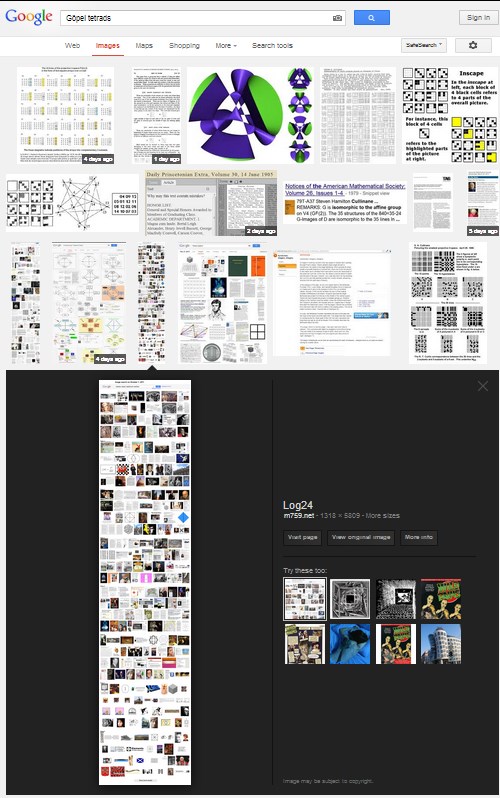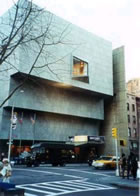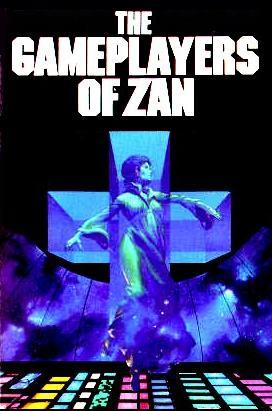* For the meaning of the title, see an obituary by Roberta Smith
in this morning’s New York Times , and Today’s Sermon.
Sunday, July 19, 2020
For Roberta Smith, Social Worker*
Wednesday, March 27, 2024
Generation
From a New York Times art obituary yesterday by Roberta Smith —
"Although frequently called a Minimalist, he came of age
with the slightly younger Post-Minimalist generation
and helped define its concerns."
And then there is the Post-it Minimalist generation . . .
Sunday, August 8, 2021
Themes
Remarks by Roberta Smith in the print version of The New York Times
on Friday, August 6, suggest a review . . .
Smith's remarks concerned a show that first opened in 2019
at the Los Angeles Museum of Contemporary Art (MOCA).
A MOCA-related post in this journal —
The Nachtmantel above is a painting by Jörg Immendorff,
who reportedly died at 61 in 2007 —
A less provocative theme from Log24 on the date of Immendorff's death:
|
|
"The form, the pattern" — T. S. Eliot
Saturday, August 7, 2021
Art Angles
And then there is Bardo College . . .
"Katz approaches her subject from every angle,
its relationship to feminism, multiculturalism and
the counterculture, as well as its (now questionable)
cultural appropriation and even its underlying debt
to Minimalism (the use of repetition and the grid)."
This is from a Roberta Smith piece yesterday morning
in The New York Times print version:
"A version of this article appears in print on Aug. 6, 2021,
Section C, Page 6 of the New York edition with the headline:
Celebrating a Riotous Decor That Keeps Eyes Moving."
Well, perhaps not every angle.
Wednesday, September 9, 2020
Artspeak Eulogy
“… several writers called Mr. Gorchov’s paintings ‘primitive,’
but he preferred ‘rudimentary.’ They took painting back to basics,
to a primal state and a set of motifs that changed only a little,
flirting with repetition but rarely succumbing to it.”
— Roberta Smith in The New York Times this afternoon.
Gorchov reportedly “died on Aug. 18 at his home in Red Hook, Brooklyn.”
See as well some art remarks on Aug. 18 in this journal —
More generally, see other posts tagged Kampf.
Update of 1:16 PM ET Sept. 9 —
Saturday, February 29, 2020
Template
|
Roberta Smith on Donald Judd’s BY ALEX GREENBERGER February 28, 2020 1:04pm If Minimalist artist Donald Judd is known as a writer at all, it’s likely for one important text— his 1965 essay “Specific Objects,” in which he observed the rise of a new kind of art that collapsed divisions between painting, sculpture, and other mediums. But Judd was a prolific critic, penning shrewd reviews for various publications throughout his career—including ARTnews . With a Judd retrospective going on view this Sunday at the Museum of Modern Art in New York, ARTnews asked New York Times co-chief art critic Roberta Smith— who, early in her career, worked for Judd as his assistant— to comment on a few of Judd’s ARTnews reviews. How would she describe his critical style? “In a word,” she said, “great.” . . . . |
And then there is Temple Eight, or Ex Fano Apollinis —

Cicero, In Verrem II. 1. 46 —
He reached Delos. There one night he secretly 46 carried off, from the much-revered sanctuary of Apollo, several ancient and beautiful statues, and had them put on board his own transport. Next day, when the inhabitants of Delos saw their sanc- tuary stripped of its treasures, they were much distressed . . . .
Delum venit. Ibi ex fano Apollinis religiosissimo noctu clam sustulit signa pulcherrima atque anti- quissima, eaque in onerariam navem suam conicienda curavit. Postridie cum fanum spoliatum viderent ii qui Delum incolebant, graviter ferebant . . . .
Sunday, September 17, 2017
For St. Christopher (Hitchens)
… who reportedly died at 62 late on Thursday, Dec. 15, 2011.
Related material — The "What As Is" link above, and a Sept. 14 post
quoting art critic Roberta Smith on a current exhibition —
"You grab your experiential richness where you find it."
— Roberta Smith, "Postwar Art Gets a Nervy Makeover"
in the online New York Times
Thursday, September 14, 2017
Lost


"You grab your experiential richness where you find it."
— Roberta Smith, "Postwar Art Gets a Nervy Makeover"
in the online New York Times today
Thursday, December 26, 2013
Dicey
For fans of Hunger Games and Elysium —
Roberta Smith in this evening's* online New York Times—
"Especially with the gap between the wealthiest
and everyone else so wide, it is dicey
for a major museum to celebrate the often frivolous
objects on which the rich spend their ever increasing
surplus income. Such a show must be beyond reproach
in every way: transparent in organization, impeccable
in exhibition design, illuminating in catalog and labeling
and, most of all, self-evidently excellent in the quality of
the objects on display."
Da capo: "I've heard of affairs that are strictly Platonic."
Wednesday, April 3, 2013
Museum Piece
Roberta Smith in 2011 on the American Folk Art Museum (see previous post):
"It could be argued that we need a museum of folk art
the way we need a museum of modern art,
to shine a very strong, undiluted light on
a very important achievement."
Some other aesthetic remarks:
"We have had a gutful of fast art and fast food.
What we need more of is slow art: art that holds time
as a vase holds water: art that grows out of modes
of perception and whose skill and doggedness
make you think and feel; art that isn't merely sensational,
that doesn't get its message across in 10 seconds,
that isn't falsely iconic, that hooks onto something
deep-running in our natures. In a word, art that is
the very opposite of mass media. For no spiritually
authentic art can beat mass media at their own game."
— Robert Hughes, speech of June 2, 2004,
quoted here June 15, 2007.
Perhaps, as well as museums of modern art and of folk art,
we need a Museum of Slow Art.
One possible exhibit, from this journal Monday:
The diagram on the left is from 1922. The 20 small squares at right
that each have 4 subsquares darkened were discussed, in a different
context, in 1905. They were re-illustrated, in a new context
(Galois geometry), in 1986. The "key" square, and the combined
illustration, is from April 1, 2013. For deeper background, see
Classical Geometry in Light of Galois Geometry.
Those who prefer faster art may consult Ten Years After.
Thursday, March 28, 2013
Wunderkammer
The title is from a New York Times article
by Roberta Smith on the Barnes collection
(see previous post):
“Nearly every room is an exhibition
unto itself— a kind of art wunderkammer,
or cabinet of curiosities….”
Another sort of Wunderkammer:

Shown above is a Google image search today for Göpel tetrads .
The selected detail is an Oct. 7, 2011, image search
for claves regni caelorum escher (2 MB).
Wednesday, March 27, 2013
Sunday, April 17, 2011
Sunday School
Apollo and the Tricksters
From The Story of N (Oct. 15, 2010)—
Roberta Smith on what she calls "endgame art"—
"Fear of form above all means fear of compression— of an artistic focus that condenses experiences, ideas and feelings into something whole, committed and visually comprehensible."
Margaret Atwood on tricksters and art—
"If it’s a seamless whole you want, pray to Apollo."
Here is some related material In memory of CIA officer Clare Edward Petty, who died at 90 on March 18—
A review of a sort of storyteller's MacGuffin — the 3×3 grid. This is, in Smith's terms, an "artistic focus" that appears to be visually comprehensible but is not as simple as it seems.
- The Pope in Plato's Cave (Sept. 16, 2006)
- A search for "einsatz" in this journal
- True Grid (Jan. 8, 2011)
- The Hesse configuration revisited (a post initially from the date of Petty's death, but later much reworked)
The Hesse configuration can serve as more than a sort of Dan Brown MacGuffin. As a post of January 14th notes, it can (rather fancifullly) illustrate the soul—

" … I feel I understand
Existence, or at least a minute part
Of my existence, only through my art,
In terms of combinational delight…."
— Vladimir Nabokov, Pale Fire
Friday, April 8, 2011
Concepts of Space
Part I — Roberta Smith in today's New York Times —
"… the argument that painting may ultimately be about
little more than the communication of some quality of
light and space, however abstract or indirect."
– Review of "Rooms With a View" at the Met
|
Pictorial version |
|
“Space: what you damn well have to see.”
– James Joyce, Ulysses
Part II — Window from A Crooked House
"Teal lifted the blind a few inches. He saw nothing, and raised it a little more—still nothing. Slowly he raised it until the window was fully exposed. They gazed out at—nothing.
Nothing, nothing at all. What color is nothing? Don't be silly! What shape is it? Shape is an attribute of something . It had neither depth nor form. It had not even blackness. It was nothing ."
Part III — Not So Crooked: The Cabinet of Dr. Montessori
An April 5 Wall Street Journal article on Montessori schools, and…

A cabinet from Dr. Montessori's own
explanation of her method
Part IV — Pilate Goes to Kindergarten and The Seven
Windows
Roberta Smith in today's New York Times —
"… the argument that painting may ultimately be about
little more than the communication of some quality of
light and space, however abstract or indirect."
— Review of "Rooms With a View" at the Met
Lowry —
Malcolm Lowry, author of Under the Volcano
Hollywood —
Related material —
| Friday, October 8, 2010
Starting Out in the Evening This post was suggested by last evening's post on mathematics and narrative and by Michiko Kakutani on Vargas Llosa in this morning's New York Times .
"One must proceed cautiously, for this road— of truth and falsehood in the realm of fiction— is riddled with traps and any enticing oasis is usually a mirage." – "Is Fiction the Art of Lying?"* by Mario Vargas Llosa, * The Web version's title has a misprint— |
Friday, October 15, 2010
Mathematics and Narrative, continued
The Story of N

Roberta Smith in the New York Times of July 7, 2006—
Art Review
Endgame Art? It's Borrow, Sample and Multiply in an Exhibition at Bard College
"… The show has an endgame, end-time mood, as if we are looking at the end of the end of the end of Pop, hyperrealism and appropriation art. The techniques of replication and copying have become so meticulous that they are beside the point. This is truly magic realism: the kind you can't see, that has to be explained. It is also a time when artists cultivate hybridism and multiplicity and disdain stylistic coherence, in keeping with the fashionable interest in collectivity, lack of ego, the fluidity of individual identity. But too often these avoidance tactics eliminate the thread of a personal sensibility or focus.
I would call all these strategies fear of form, which can be parsed as fear of materials, of working with the hands in an overt way and of originality. Most of all originality. Can we just say it? This far from Andy Warhol and Duchamp, the dismissal of originality is perhaps the oldest ploy in the postmodern playbook. To call yourself an artist at all is by definition to announce a faith, however unacknowledged, in some form of originality, first for yourself, second, perhaps, for the rest of us.
Fear of form above all means fear of compression— of an artistic focus that condenses experiences, ideas and feelings into something whole, committed and visually comprehensible. With a few exceptions, forms of collage and assemblage dominate this show: the putting together (or simply putting side by side) of existing images and objects prevails. The consistency of this technique in two and three dimensions should have been a red flag for the curators. Collage has driven much art since the late 1970's. Lately, and especially in this exhibition, it often seems to have become so distended and pulled apart that its components have become virtually autonomous and unrelated, which brings us back to square one. This is most obvious in the large installations of graphic works whose individual parts gain impact and meaning from juxtaposition but are in fact considered distinct artworks."
Margaret Atwood on art and the trickster—
"The pleasures of fabulation, the charming and playful lie— this line of thought leads Hyde* to the last link in his subtitle, the connection of the trickster to art. Hyde reminds us that the wall between the artist and that American favourite son, the con-artist, can be a thin one indeed; that craft and crafty rub shoulders; and that the words artifice, artifact, articulation and art all come from the same ancient root, a word meaning 'to join,' 'to fit,' and 'to make.' If it’s a seamless whole you want, pray to Apollo, who sets the limits within which such a work can exist. Tricksters, however, stand where the door swings open on its hinges and the horizon expands: they operate where things are joined together, and thus can also come apart."
* Lewis Hyde, Trickster Makes This World: Mischief, Myth, and Art, Farrar Straus & Giroux, January 1998
Smith mentions "an artistic focus that condenses experiences, ideas and feelings into something whole, committed and visually comprehensible."
Atwood mentions "a seamless whole."
For some related remarks, see "A Study in Art Education" and the central figure pictured above. (There "N" can stand for "number," "nine," or "narrative.")
Saturday, March 13, 2010
ART WARS continued…
Wikipedia states that painter R.B. Kitaj (see previous references) was the model for the protagonist of the Philip Roth novel Sabbath's Theater.
A Google search shows that the article (no longer online) on Kitaj cited as a source by Wikipedia does indeed make this claim–
In-Your-Face Outsider | Jerusalem Report | Jerusalem Post
By MATT NESVISKY … not least, Philip Roth, who modeled
the protagonist of the 1995 novel "Sabbath's Theater" largely after Kitaj. …
www.jpost.com/servlet/Satellite?apage=2&cid=1192380767901…
The rest of Nesvisky's article may or may not support his claim. It is available by subscribing to HighBeam.
Related material–
The New York Times on Oct. 24, 2007–
R. B. Kitaj, Painter of Moody Human Dramas, Dies at 74Ileana Sonnabend, Art World Figure, Dies at 92Ileana Sonnabend’s eye, shrewdness and lasting alliance with her first husband, Leo Castelli, made her one of the most formidable contemporary art dealers of her time. |
"Sonnabend" means "Saturday" in German.
Some say the Sabbath is Saturday, others say Sunday.
Here is the Log24 entry for the day that
Kitaj and Sonnabend died– a Sunday—
Sunday October 21, 2007Halloween “The Game in the Ship cannot be approached as a job, a vocation, a career, or a recreation. To the contrary, it is Life and Death itself at work there. In the Inner Game, we call the Game Dhum Welur, the Mind of God. And that Mind is a terrible mind, that one may not face directly and remain whole. Some of the forerunners guessed it long ago– first the Hebrews far back in time, others along the way, and they wisely left it alone, left the Arcana alone.”
|
The New York Times on Sonnabend:
… Also talked about was the Sonnabend 1991 show of Jeff Koons’s “Made in Heaven” series of paintings and sculptures that showed the artist engaged in sexual acts with his wife, Ilona Staller.
Mrs. Sonnabend was variously described as “an iron marshmallow” and “a cross between Buddha and Machiavelli.” Short and plump, she was grandmotherly in appearance from a relatively early age due in part to an illness that necessitated a wig.
Her genteel, old Europe manner belied an often imperious yet bohemian and self-deprecating personality. Her soft, fluty voice often left a listener unprepared for the force of her comments, which she could deliver in at least five languages.
Happy Women's History Month.
Friday, December 26, 2008
Friday December 26, 2008
“Wayne C. Booth’s lifelong
study of the art of rhetoric
illuminated the means
by which authors seduce,
cajole and lie to their readers
in the service of narrative.”
— New York Times, Oct. 11, 2005
“He ends the show with Ed Ruscha’s painting ‘The End.’ But if you consult the brochure, you’ll see that it also lists one final object up above, near the ceiling. This is the green LED exit sign that directs you out of the gallery. The sign, designed by Mark Wamble, Dawn Finley and Ben Thorne of Interloop Architecture, is, like everything else here, in the Modern’s collection. Here, of course, it is also just doing its job.”
Other Christmas Day endings —
Those of W.C. Fields– see Cafe Society (April 14, 2007)– and, this year, of Eartha Kitt:

From April 12 last year:
Wednesday, October 24, 2007
Wednesday October 24, 2007
New York Times—
R. B. Kitaj, Painter of Moody Human Dramas, Dies at 74
|
Thursday, September 13, 2007
Thursday September 13, 2007
The New York Times,
Thursday, September 13, 2007–
Burt Hasen, Artist Inspired
by Maps, Dies at 85
Burt Hasen, a New York painter who drew inspiration from his experience working with maps as a military technician during World War II, died on Friday [September 7, 2007] in Manhattan. He was 85 and lived in Lower Manhattan….
During the war he served in the Air Force in the Pacific, where his duties involved close study of aerial maps, an activity that lastingly influenced his work. His densely worked canvases often had an overhead perspective….Toward the end of his life, many of his seemingly abstract paintings were based directly, and in detail, on maps….
In 2006 Mr. Hasen, his wife and the other tenants of a five-story building at 7 Dutch Street near the South Street Seaport made news when they organized against their landlord’s attempt to evict them from the rent-regulated lofts they had occupied for more than 30 years. They subsequently had their leases renewed.

“For every kind of vampire,
there is a kind of cross.”
— Gravity’s Rainbow
Tuesday, December 19, 2006
Tuesday December 19, 2006
Allan Stone,
art dealer and collector,
died at 74 on Friday,
Dec. 15, 2006.
From his obituary in
yesterday's
New York Times:
The Log24 entry for the date of Stone's death, titled "Putting the X in Xmas," suggests the following picture as a memorial:

Though not bristling
with paint, the picture
is, in a sense, realistic.
It should be noted of the
obituary by Roberta Smith
that
"This is the exact opposite
of what echthroi do in
their X-ing or un-naming."
— Wikipedia on
A Wind in the Door
Monday, November 20, 2006
Monday November 20, 2006
Triumphs
Yesterday's link to a Log24 entry for the Feast of the Triumph of the Cross led to the following figure:
Today, an entry in the The New Criterion's weblog tells of Hilton Kramer's new collection of essays on art, The Triumph of Modernism.
From a Booklist review:
Kramer "celebrates the revelations of modern art, defining modernism as nothing less than 'the discipline of truthfulness, the rigor of honesty.'"
Further background: Kramer opposes
"willed frivolity and politicized vulgarization as fashionable enemies of high culture as represented in the recent past by the integrity of modernism."
Perhaps Kramer would agree that such integrity is exemplified by "Two Giants" of modernism described by Roberta Smith in The New York Times recently (Nov. 3– birthdate of A. B. Coble, an artist of a different kind). She is reviewing an exhibit, ''Albers and Moholy-Nagy: From the Bauhaus to the New World,'' that continues through Jan. 21 at the Whitney Museum of American Art,

945
Madison Avenue.
This instance of the number 945 as an "artists' signature" is perhaps more impressive than the instances cited in yesterday's Log24 entry, Signature.
Tuesday, October 31, 2006
Tuesday October 31, 2006
From 7/07, an art review from The New York Times:
Endgame Art?
It's Borrow, Sample and Multiply
in an Exhibition at Bard College
"The show has an endgame, end-time mood….
I would call all these strategies fear of form…. the dismissal of originality is perhaps the oldest ploy in the postmodern playbook. To call yourself an artist at all is by definition to announce a faith, however unacknowledged, in some form of originality, first for yourself, second, perhaps, for the rest of us.
Fear of form above all means fear of compression– of an artistic focus that condenses experiences, ideas and feelings into something whole, committed and visually comprehensible."
— Roberta Smith
would consider the
following "found" art an
example of originality.
It nevertheless does
"announce a faith."

"First for yourself"
Today's mid-day
Pennsylvania number:
707
See Log24 on 7/07
and the above review.
"Second, perhaps,
for the rest of us"
Today's evening
Pennsylvania number:
384
This number is an
example of what the
reviewer calls "compression"–
"an artistic focus that condenses
experiences, ideas and feelings
into something
whole, committed
and visually comprehensible."
"Experiences"
See (for instance)
Joan Didion's writings
(1160 pages, 2.35 pounds)
on "the shifting phantasmagoria
which is our actual experience."
"Ideas"
"Feelings"
See A Wrinkle in Time.
"Whole"
The automorphisms
of the tesseract
form a group
of order 384.
"Committed"
See the discussions of
groups of degree 16 in
R. D. Carmichael's classic
Introduction to the Theory
of Groups of Finite Order.
"Visually comprehensible"
See "Diamond Theory in 1937,"
an excerpt from which
is shown below.

The "faith" announced by
the above lottery numbers
on All Hallows' Eve is
perhaps that of the artist
Madeleine L'Engle:
Sunday, March 26, 2006
Sunday March 26, 2006
continued
Questions posed by
Roberta Smith in the
New York Times
of Jan. 13, 2006:
“‘What is art?’ may be the
art world’s most relentlessly asked
question. But a more pertinent one
right now is, ‘What is an art gallery?'”
— from “Who Needs a
White Cube These Days?“

An example that may help:
London’s White Cube gallery
and its current Liza Lou exhibit,
which is said to convey
“a palpable sense of use,
damage, lost time, lost lives.”
See the previous entry for details.
On the brighter side, we have
“Midnight in the Garden
of Good and Evil”
soundtrack CD—
“Accentuate the positive”–
and an entry from last Christmas:
|
Compare and contrast:
(Click on pictures
for details.)
|
“Recollect what I have said to you,
that this world is a comedy
to those who think,
a tragedy to those who feel.
This is the quint-essence of all
I have learnt in fifty years!”
— Horace Walpole,
letter to Horace Mann,
5 March, 1772
Sunday, September 8, 2002
Sunday September 8, 2002
ART WARS of September 8, 2002:
Sunday in the Park with Forge
From The New York Times obituary section of Saturday, September 7, 2002:
Andrew Forge, 78, Painter
and a Former Dean at Yale, Dies
By ROBERTA SMITH
 ndrew Forge, a painter, critic, teacher and former dean of painting at the Yale School of Art, died on Wednesday [Sept. 4] in New Milford, Conn. He was 78…
ndrew Forge, a painter, critic, teacher and former dean of painting at the Yale School of Art, died on Wednesday [Sept. 4] in New Milford, Conn. He was 78…
[As a painter] he reduced his formal vocabulary to two small, basic units: tiny dots and short, thin dashes of paint that he called sticks. He applied those elements meticulously, by the thousands and with continual adjustments of shape, color, orientation and density until they coalesced into luminous, optically unstable fields.
These fields occasionally gave hints of landscapes or figures, but were primarily concerned with their own internal mechanics, which unfolded to the patient viewer with a quiet, riveting lushness. In a New York Times review of Mr. Forge’s retrospective at the Yale Center for British Art in 1996, John Russell wrote that “the whole surface of the canvas is mysteriously alive, composing and recomposing itself as we come to terms with it.”
Above: Untitled image from Andrew Forge: Recent Paintings, April 2001, Bannister Gallery, Rhode Island College, Providence, RI
See also
An Essay on the work of Andrew Forge
by Karen Wilkin
in The New Criterion, September 1996
From that essay:
“At a recent dinner, the conversation—fueled, I admit, by liberal amounts of very good red wine—became a kind of Socratic dialogue about the practice of art criticism…. There was… general agreement that it’s easier to find the rapier phrase to puncture inadequate or pretentious work than to come up with a verbal equivalent for the wordless experience of being deeply moved by something you believe to be first rate.”
See also my journal note of March 22, 2001, The Matthias Defense, which begins with the epigraph
Bit by bit, putting it together.
Piece by piece, working out the vision night and day.
All it takes is time and perseverance
With a little luck along the way.
— Stephen Sondheim






















